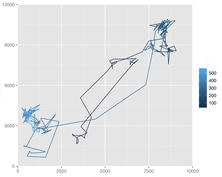Publication trimestrielle du Laboratoire
d'analyse et d'architecture des systèmes du CNRS
De réseaux de capteurs vers les systèmes Cyber-Physiques
Architecture de communications reconfigurables,très faible consommation pour des réseaux des capteurs
The last ten years saw a lot of emerging applications for Wireless Sensor Network all over around us, toward the Internet of Things and Cyber Physical Systems. University of Berkeley is the first to propose the Berkeley Motes and nowadays a lot of Motes are available, but the real-world deployment of WSN is not yet done. Why? For many reasons. First of all, be able to real deploy everywhere and anytime the wireless sensor network, the most important requirement is the autonomy of wireless sensor network, so one of the major driver is the energy efficiency. Others major requirements are low cost, small size and user friendly communicating nodes. Moreover, as we will present in the next chapters, for many applications, like aerospace ones, it is necessary to re-think the complete wireless architecture to be able to satisfy that very demanding applications. The available communications protocols and architectures don’t answer the demand of those applications.
We tried to answer to these requirements during our research. We propose in this research an energy efficient architecture for wireless sensor networks (WSN). To be able to respond to different demands on new services, this architecture is based on cross layering between MAC layers and PHY layer. As the demands of different applications are very different in term of distance, spectrum occupation, number of communicating nodes, the proposed solution is a reconfigurable PHY layer based on IR-UWB communication. Energy efficiency was the majoor driver in our developments. A design taking into account the whole system is necessary and was realized.





